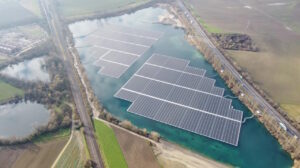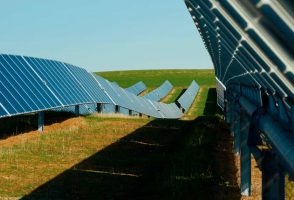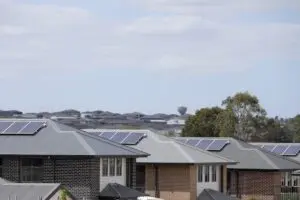Four new large scale solar farms joined Australia’s main grid in the first quarter of 2021, but there is still no sign of generation from the country’s biggest wind project, the heavily delayed 530MW Stockyard Hill wind farm.
According to the Australian Energy Market Operator, the four new solar farms that joined the National Electricity Market in the March quarter were the Glenrowan West (110 MW), Cohuna (27MW), and Winton (85MW) solar farms all in Victoria and the 30MW Corowa solar farm in NSW.
That helped lift average grid-scale solar output to a record quarterly high of 1,070MW, beating the previous record set in the December quarter by 48MW.
The biggest increases came in NSW, where solar output rose by an average 166MW as big solar farms opened last year – such as the Darlington Point, Bomen and Sunraysia facilities – increased their output as they worked through the lengthy commissioning processes.
In Victoria, the average output increased by 105MW), also helped by the removal of constraints that had been imposed on four solar farms in the West Murray region last year, before tuning inverters solved the oscillation issues.
Other wind and solar farms to finally complete their commissioning process are the 27MW Maryrorough solar farm in Queensland, the 30MW Molong solar farm in NSW, the 62MW Elaine wind farm in Victoria and the 144MW Cattle Hill wind farm in Tasmania.
According to AEMO, another handful of projects, including the 120MW Gangarri solar farm in Queensland, the small 7MW Ferguson wind farm in Victoria, and the Adelaide Desalination Plant solar and battery facility, have also been registered.
But there is no sign of Stockyard Hill, which is being built and owned by Goldwind, and which has long term off take agreements with Origin Energy. Its issues have not been officially identified, although market talk is also of “oscillation” issues, although that carries a broad spectrum.
There are signs of progress, with a recent AEMO document revealing that the project, which had completed construction in December, has been assigned a dispatchable unit identification, or DUID, (STOCKYD1), which suggests it is close to registration, although RenewEconomy understands it is yet to achieve that.
After registration, the wind farm will then be able to start generating into the grid, working through a series of “hold points” where its settings and impact on the grid is reviewed. That process can take several months, if not longer.
Stockyard Hill was hailed as a landmark in competitive wind energy pricing when it was first announced in 2017, but it was supposed to be on line and producing a year ago. Like other wind and solar projects in Australia has faced significant connection delays, but its delays are significant.
Earlier this year, its delays forced Origin – the former project owner and now sole buyer of its output – to pay a shortfall penalty to the Clean Energy Regulator, in the hope of recupering its costs when production starts at a later date. It said in February it did not expect full production until 2022.
RenewEconomy sought comment from Goldwind but did not receive a reply before publication.










